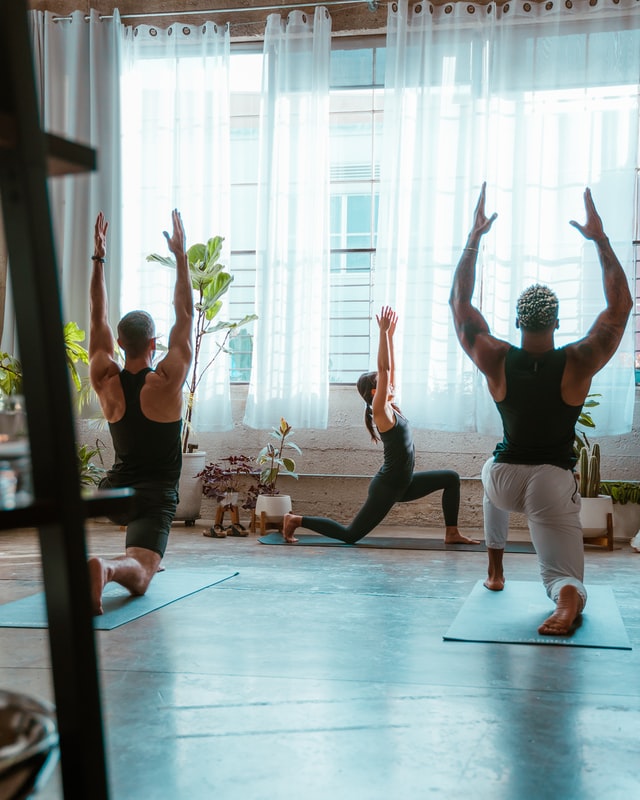


If you have ever been to a yoga class or done a simple stretching sequence, chances are you have done cat-cow. Marjaryasana Bitilasana, or cat-cow, is a combination of two poses (cat + cow) that consist of the two most fundamental movements in yoga. This sequence is a gentle warm-up that releases tension in the spine, preparing the body for more challenging poses to come.
Thanks to the wondrous world of the Internet, intuitive Pilates instructor Helen Phelan lends us a few tips in one of her Instagram Reels, about this. The amount of tension we hold in our necks, shoulders, and backs is colossal. So you can imagine how engaging in a cat-cow stretch can not only feel expansive but oh-so soothing. That is unless you are practicing it incorrectly. Here’s what you want to pay attention to.
By failing to incorporate the neck into this famous sequence, you’re actually adding extra tension to the neck area, making it even stiffer. How ironic, right? While you’ll still initiate the articulation of this posture with your pelvis, “let your neck travel all the way up through your cervical spine instead of allowing the movement to stop at the base of your neck.” An easy way to check if you’re doing this precisely is by seeing where your line of sight lies. When your back is rounded (cat position), you should be looking at your belly button. Conversely, when your back is arched (cow position), you should be looking towards the sky or ceiling.
Phelan also mentions paying attention to your shoulders. When practicing this movement, try spreading your shoulder blades wide to increase the stretch and help contract the abs. As you arch, squeeze them together, thus creating an even juicer ab and shoulder stretch.
Though it’s thought to be a pretty straightforward yoga move, cat-cow can provide immense relief to sore abs, shoulders, necks, and backs. Whether you practice this movement as a warm-up or utilize it on your rest days, be sure to fully incorporate your neck to get the maximum benefits out of it.
Related Stories:
Have Sciatica? Check Out 5 Yoga Poses That May Help
6 Reasons Why Rest Days Are Productive
Disclaimer:
Please remember to always consult with your physician before attempting any new exercises to prevent injury. No content on this site should ever be used in place of direct medical advice from your doctor or other qualified clinicians.
ヨガのクラスに行ったことがあるか、簡単なストレッチシーケンスを行ったことがある場合は、 あなたはキャットアンドカウも体験した事でしょう。 Marjaryasana Bitilasana、またはキャットカウは、ヨガの2つの最も基本的な動きで構成される2つのポーズ(猫+牛)の組み合わせです。 このシーケンスは、脊椎の緊張を解放する穏やかなウォームアップであり、より挑戦的なポーズが来るのに備えて体を準備します。
インターネットのおかげで、直感的なピラティスインストラクターのヘレン・フェランは、彼女のInstagramリールの1つでいくつかのヒントを教えてくれます。首、肩、背中に抱く緊張の量は膨大です。 ですから、キャットカウのストレッチをすることで、広がりを感じるだけでなく、とても落ち着くことができます。 それはあなたがそれを間違って練習していない限りです。ここからが注意を払ってもらいたいことです。
この有名なシーケンスに首を組み込むことに失敗すると、実際には首の領域に余分な張力が加わり、首がさらに硬くなります。 皮肉なことですよね? 骨盤を使ってこの姿勢の関節運動を開始しますが、「首の付け根で動きを止めるのではなく、首を頸椎まで完全に移動させます」。 これを正確に行っているかどうかを確認する簡単な方法は、視線がどこにあるかを確認することです。 背中が丸くなったら(猫の位置)、へそを見ているはずです。 逆に、背中がアーチ型(牛の位置)の場合は、空または天井の方を向いている必要があります。
フェランはまた、あなたの肩に注意を払うことに言及しています。 この動きを練習するときは、肩甲骨を広く広げてストレッチすることを意識し、腹筋を収縮させてみてください。 アーチを描くときに、それらを一緒に絞って、腹筋と肩のストレッチを均一にします。
それはかなり簡単なヨガの動きであると考えられていますが、キャットカウは腹筋、肩、首、背中の痛みを非常に和らげることができます。 この動きをウォームアップとして練習するか、休息日に利用するか、首を最大限に活用するために、首を完全に組み込むようにしてください。
関連記事:
Have Sciatica? Check Out 5 Yoga Poses That May Help
6 Reasons Why Rest Days Are Productive
免責事項:
怪我を防ぐために新しい運動を試みる前に、必ず医師に相談することを忘れないでください。 このサイトのコンテンツは、医師または他の資格のある臨床医からの直接的な医学的アドバイスの代わりに使用してはなりません。